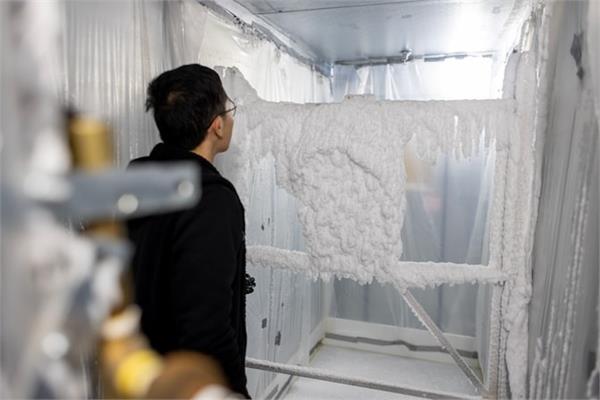
Taking inspiration from nature could allow researchers to create ice-shedding coatings protecting solar panels and airplane wings.
Researchers from the University of Michigan have recently announced that they are studying biological molecules used by other living creatures to survive freezing temperatures in order to identify an innovative non-toxic material that could help to develop coatings that might keep solar panels and airplane wings free from ice. The $11.5 million project, which is funded by the Defense Advanced Research Projects Agency, is carried out also by Raytheon Technologies, the North Dakota State University and the University of Minnesota.
The already existing materials employed to accomplish these tasks come with serious downsides. For instance, road salts prevent pavements and streets from freezing but also corrode concrete
and enter natural freshwaters through runoff, to the detriment of aquatic life. Spraying planes with de-icing fluids, on the other hand, ensures that winter flights stay safe, but the chemicals in such fluids are toxic and can also pollute waterways.
The new project, however, aims to find molecules that can be used to manipulate ice and snow in several ways, including changing the temperature at which water freezes, increasing and decreasing how strongly ice adheres to surfaces, changing the structure of the formed ice and inhibiting or encouraging ice crystals to grow on surfaces.
“For the past seven or eight years now, my group has been making surfaces that have very low adhesion to ice. Such ice-shedding coatings can be very useful for a number of applications such as wind turbines, power lines or airplane wings,” has stated Anish Tuteja, a professor of materials science and engineering at the University of Michigan. “However, for many other applications, it would be beneficial to completely eliminate ice formation. Preventing ice formation for hours on end in freezing conditions has thus far been very challenging to achieve.”
Taking inspiration from nature
To meet their goals, the research team is looking to plants, animals and microbes for inspiration. Many organisms produce molecules that allow them to survive freezing solid or stop their bodies from freezing. Wood frogs, for example, freeze completely solid every winter, but hop back to life in the spring.
They survive freezing temperatures by producing antifreeze lipids
that prevent ice from damaging their cell membranes when they freeze over the winter and lower the temperatures at which water freezes. Such molecules will be studied by the project as a starting point when designing new de-icing products.
“If you combine the molecules in the right ratios, the freezing point can decline more than what would be achievable by each molecule individually. Once we start to gather a lot of data on how these molecules work, we will work with machine-learning experts who will be able to determine which parts of the molecule might be modified to further improve their performance,” has concluded Tuteja.